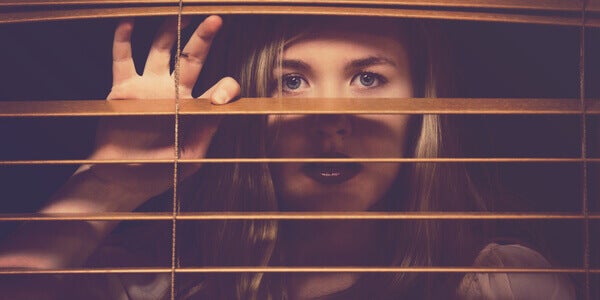Much has been written or said about agoraphobia. This disorder is often misunderstood as “fear of open spaces or spaces where many people gather”, which is not entirely correct, because agoraphobia is characterized by the experience of fear of fear, without fear of open spaces, according to the DSM. -5 Statistical diagnostic manual for mental disorders, agoraphobia is mainly characterized by two diagnostic criteria:
1. Intense fear of two or more of the following situations:
- 2.
- The intense fear of being in such situations (in most cases) revolves around a panic attack and not being able to escape or receive help.
- That’s why problematic emotion based on agoraphobia is fear of fear.
- The agoraphobic situation.
- Such as queuing or being in the movies.
- Is the problem itself.
- But that the person is very afraid to experience intense fear of a panic attack or an anxiety attack.
- An anxiety attack that you think can occur in these situations.
In this article we will briefly explain the emotional functioning of agoraphobia, what causes it, what maintains it, and you will also find a series of practical ideas not to limit yourself in your life.
When a person suffers from agoraphobia, they are not really afraid to be in an open space or where there are many people, in fact what they are afraid of is going through an anxiety attack or a panic attack THIS PLACE. This prevents you from leaving the house and limits where you are going.
In other words, agoraphobia is defined by fear of fear, so a person creates a kind of ”map” of places where they feel safe or insecure, so they only go to places where they are not afraid that panic attack will occur. happens, and if the person has to keep moving forward and can’t avoid the situation, try to go with someone they trust.
Similarly, a person with agoraphobia may become totally incapable of moving away from places he has defined as “safe” if he is not accompanied by a trusted person. Fear of fear is therefore almost always accompanied by depressive symptoms that are the result of the subject’s negative self-image and the feeling of incapacity to everyday tasks.
In the vast majority of cases, the agoraphobic person has already experienced an episode of very intense anxiety or a panic attack, as this experience triggers their deepest and most primitive fear (intense activation of the brain amygdala), the person believes that it is going to die. , which will pass out immediately. Some also think so? or that they will lose control of the toilet (they will do their needs for clothes).
This is why they begin to be afraid of having that fear (that of crisis or panic attack) and take precautions to reduce the level of exposure, these precautions are avoidance behaviors that can only limit practical and emotional independence (aggravate self-image and make us feel even more incompetent) and increase fear, every day a little more.
Although fear of fear in agoraphobia is present most of the time in different situations, the person in their household feels protected, less vulnerable, although he has also had panic attacks, as a result, we observe how people with agoraphobia (inadvertently) ) are wrong and develop a number of security behaviors, in many cases superstitious and evasive , which make them feel like everything is under control.
Why with this map of safe situations and the prevention of certain situations, can you never go through this?It’s okay? And that’s really safe. The false safety of the agoraphobic person only incubates and increases fear, every day a little more. . Inadvertently, he builds a reality that ends up suffocating his freedom and independence, out of fear again.
At this point we refer to behaviors that prevent the problem of fear from being afraid, that is, agoraphobia is maintained by a different element than the one that generated it, most cases of agoraphobia are developed by the previous experience of a panic attack (in one of its variants) and are maintained not by these attacks , but for preventive and safe conduct.
“Anyone who fears suffering already suffers from fear. Chinese proverb?
Today, the only way to overcome fear in agoraphobia is to face it, you have to have a perceptual-corrective experience that breaks the associations between situations-places-fear, and for this you have to resort to therapy.
There are different therapeutic approaches to overcome fear; However, the only approach that has scientifically proven its effectiveness is cognitive-behavioral therapy, this does not mean that it is the only therapy that works, but that it is the only one that has demonstrated it with empirical evidence (with objective facts). In this case, to overcome the fear of fear, it is necessary to consult a psychologist who will guide you in the necessary steps to face this fear.
On the other hand, a very good exercise to start taking care of your problem is to study your case and be able to define how far you can go, that is, you must first define your safe areas and set the maximum distance you can reach. you can stay away from those areas and secondly, you can try to go through these security places and try to go a little further each day. It’s a great way to start having corrective fear experiences.
Finally, remember that fear is irrational and therefore requires corrective experiments to begin to decrease. Just by thinking or reading self-help books, you’re unlikely to overcome agoraphobia. Your mind must relearn that what you fear so much is uncomfortable, but not dangerous. . Rejoice!

